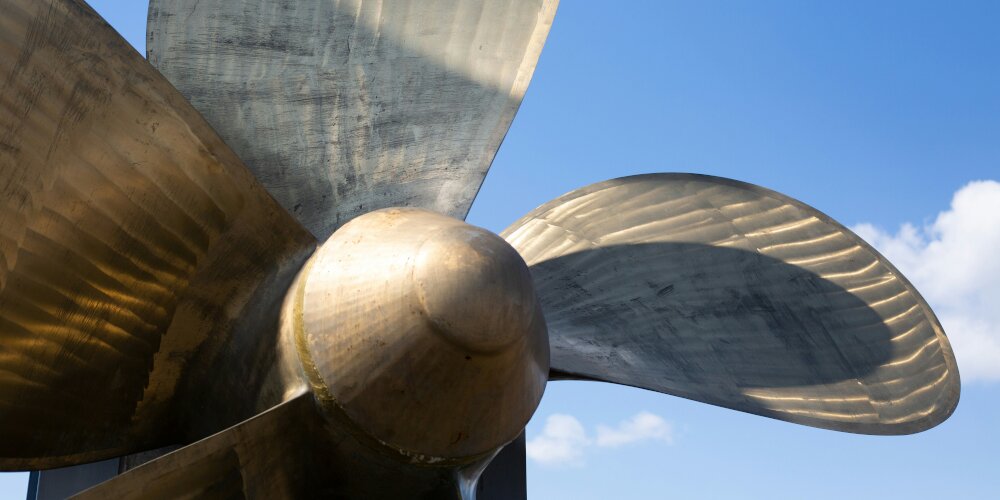Browse our services
Explore how Brookes Bell can help you
Find an expert
Meet our team, find and expert and connect
Contact us
Get in touch, we're here to help

A recent report from Lloyd’s Register (LR) has found that advanced propulsion energy saving devices (ESDs) could deliver up to a 10% fuel reduction for vessels, yet fewer than 2% of the global fleet currently benefit from them.
The report, titled ‘Applying advanced propeller designs to ships’, shows that high-efficiency propellers typically achieve fuel savings of between 3% and 10%. Popular devices like rudder bulbs have reached demonstrated reductions of around 3.5%.
Yet only 1.74% of the global fleet currently features the rudder bulb when delivered as newbuilds.
The data from the orderbook paints a more optimistic picture. 8.42% of vessels currently on order are being built with some form of ESD, suggesting that shipowners are beginning to recognise the benefits of retrofits and advanced propulsion systems.
LR’s report identifies bulk carriers, tankers, and container ships as the prime candidates for retrofitting.
In the bulk carrier segment, 16.87% of vessels on order will be fitted with rudder bulbs compared to just 6.74% of those already in service. In the container ship category, rudder bulbs, stator fins, and boss cap fins each appear on at least 10% of vessels in both existing fleets and on order.
Overall, more than 10,000 vessels across the existing fleet and the orderbook now feature some form of propulsion energy-saving technology, with an additional 1,400 ships having been retrofitted since 2020.
The growth in installations on existing vessels has been particularly striking, showing nearly four-fold expansion since 2020. Currently, close to 1,500 vessels have been contracted to be fitted with these devices by the end of 2024.
Interestingly, there is also a trend towards retrofitting newer vessels. More than one-third of retrofit projects in 2024 were performed on ships that are less than ten years old, a significant increase from 16% of retrofits on similarly aged vessels in 2020. By 2024, 12% of retrofits have been undertaken on vessels built in the previous six years, a category that saw no activity in 2020.
Regulatory pressures are cited as the primary catalyst driving these retrofit activities. The IMO’s Carbon Intensity Indicator (CII) and its broader greenhouse gas strategy, as well as European measures such as the EU Emissions Trading System and FuelEU Maritime, are directly linking vessel performance to financial penalties.
LR’s analysis predicts that if a 20% fuel consumption reduction could be achieved, an Aframax tanker operator could save nearly $3 million over ten years by reducing exposure to European regulatory penalties.
The report also highlights challenges facing ship operators when selecting and implementing retrofit technologies. Operators often struggle with technology selection due to potential interactions between different devices, unverified performance claims, and a lack of comprehensive understanding of vessel-specific requirements.
Some promising devices have failed during full-scale validation testing despite impressive model test results. The report identifies biofouling - marine growth on propeller blades and other ESDs - as a significant threat that can potentially negate efficiency gains by increasing surface roughness and altering hydrodynamic profiles.
To address these challenges, LR recommends a five-step approach. This includes a comprehensive vessel assessment, hydrodynamic analysis using computational fluid dynamics, a thorough consideration of technical factors such as torsional vibration and underwater radiated noise, robust performance monitoring, and strategic long-term maintenance planning.
“Our research reveals that propeller and ESD retrofits offer ship operators a proven pathway to significant fuel savings, extended regulatory compliance, and meaningful emissions reductions,” said Claudene Sharp-Patel, global technical director at LR, summing up the findings.
“However, successful propeller and ESD retrofits require far more than simply bolting on additional equipment. They demand sophisticated analysis, careful integration with existing systems, and ongoing performance management. Our role extends throughout the entire retrofit journey, from initial assessment through long-term optimisation”.
Then speak to Brookes Bell’s naval architects today. Our team can assist you with a variety of services including the assessment of existing vessels or structures, vessel design, the investigation of incidents, assistance with vessel performance approval and more.
For more maritime industry insights, news and information, read the Brookes Bell News and Knowledge Hub…
MAN to Deliver World’s Largest Methanol Engine | Novel Emissions Filtering & Carbon Capture Technology Demonstrated On At-Berth Ships | Cefor: “Silver Tsunami” of Machinery Damage on the Way